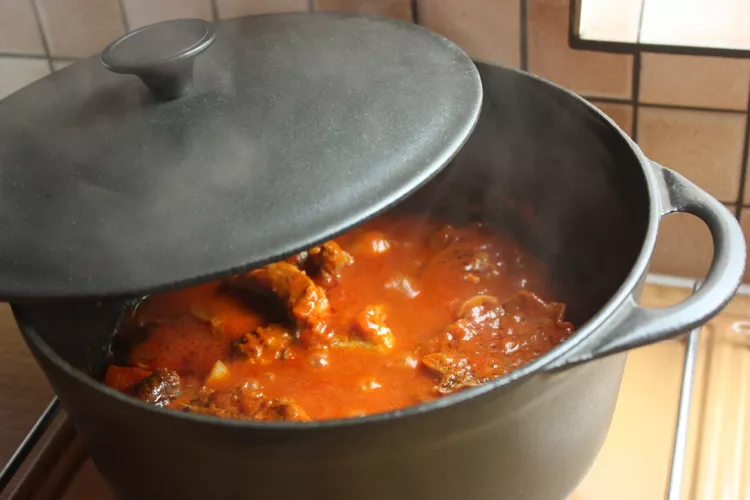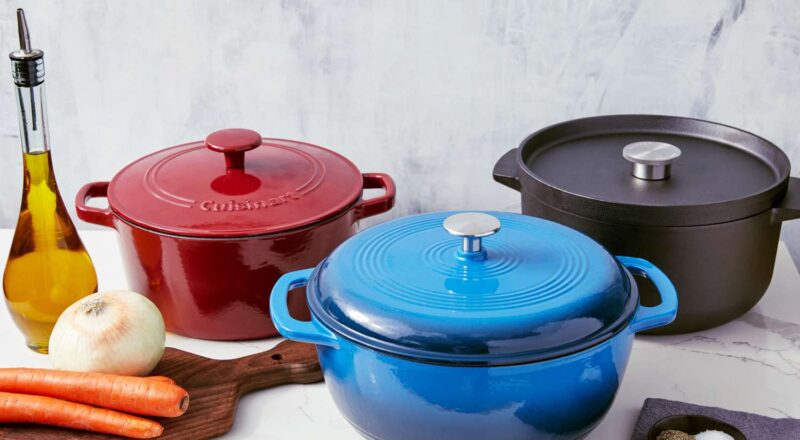Cooking a roast in a Dutch oven is an excellent way to create a delicious and tender meal. This classic method is loved by home cooks and professional chefs alike for its simplicity and terrific results. In this article, we will guide you through the process of how to cook a roast in a Dutch oven, ensuring that you get the most out of this amazing cooking technique.

Why a Dutch Oven?
A Dutch oven is a versatile and heavy-duty pot with a tight-fitting lid. It is made from cast iron, which provides even heat distribution and retention. Its here where the magic happens. The heavy lid traps moisture and flavors, resulting in a tender and flavorful roast.

Choosing the Right Roast
The first step in cooking a roast in a Dutch oven is selecting the right cut of meat. Common choices include chuck roast, brisket, and rib roast. These cuts are marbled with fat, which ensures a delicious and juicy end product.
Chuck Roast
The chuck roast is a popular choice for its perfect balance of flavor and tenderness. It comes from the shoulder part of the cow and is ideal for slow cooking.
Brisket
Brisket is known for its rich flavor and tenderness. It comes from the lower chest area of the cow and is typically cooked low and slow.
Rib Roast
Rib roast is a more luxurious choice and is incredibly flavorful. It comes from the rib section and is often sold as a standing rib roast or prime rib.

Preparation
Seasoning the Roast
Season your roast generously with salt, pepper, and your favorite herbs and spices. This step is crucial for ensuring maximum flavor penetration.
Searing the Meat
Before you begin slow-cooking, it’s important to sear the meat. Heat some oil in your Dutch oven over medium-high heat, then add the roast. Sear each side until it develops a deep brown crust. This process enhances the flavor and color of the final dish.

Cooking the Roast
Braising Liquid
Once the meat is seared, it’s time to add the braising liquid. Common choices include beef broth, red wine, or a combination of both. The liquid should come about halfway up the sides of the meat. This provides enough moisture for slow cooking without boiling the meat.
Adding Aromatics
Enhance the flavor by adding aromatics such as garlic, onions, carrots, and celery to the pot. These vegetables will not only add flavor but also create a delicious side dish to accompany your roast.
Perfecting the Roast
Cooking Time and Temperature
The key to a tender roast is low and slow cooking. Preheat your oven to 300F (150C) and place the Dutch oven inside. The cooking time will depend on the size of the roast, but a general rule of thumb is to cook it for about 1 hour per pound. Larger roasts may require more time, so be patient and check for tenderness.
Resting the Meat
Once your roast is done, remove it from the oven and let it rest for about 15-20 minutes. This allows the juices to redistribute, resulting in a juicier and more flavorful meat.
Serving Suggestions
Now that you’ve mastered how to cook a roast in a Dutch oven, it’s time to serve it up. Slice the roast against the grain for maximum tenderness, and serve it with the cooked vegetables and pan juices. You can also pair it with mashed potatoes, rice, or your favorite side dishes.
Cleaning and Maintenance
Proper care of your Dutch oven ensures that it will last for generations. After cooking, allow the pot to cool before washing. Avoid using harsh detergents or steel wool, as they can damage the seasoning. Instead, use warm water, a gentle brush, and a small amount of mild soap. Dry thoroughly and apply a thin layer of oil to prevent rust.
FAQs
Can I cook a roast in a Dutch oven on the stovetop?
Yes, you can. Start by searing the meat on the stovetop and then cover and cook on low heat until tender.
How do I know when my roast is done?
A roast is done when it reaches an internal temperature of 145F (63C) for medium-rare and 160F (71C) for medium. Use a meat thermometer to check for doneness.
Can I add potatoes to my Dutch oven roast?
Absolutely! Adding potatoes to the Dutch oven along with the roast and other vegetables makes for a complete and hearty meal.
As an Amazon Associate, I earn from qualifying purchases.
For more information on maintaining your Dutch oven, visit the Food Network blog.
If you are interested in how long to cook a roast in cast iron skillet, please visit our internal link.
For more delicious recipes using a cast iron skillet, check out our article on how to cook hash browns.
Don’t forget to read our guidelines on how to protect glass top stove from cast iron to avoid damaging your stove.

